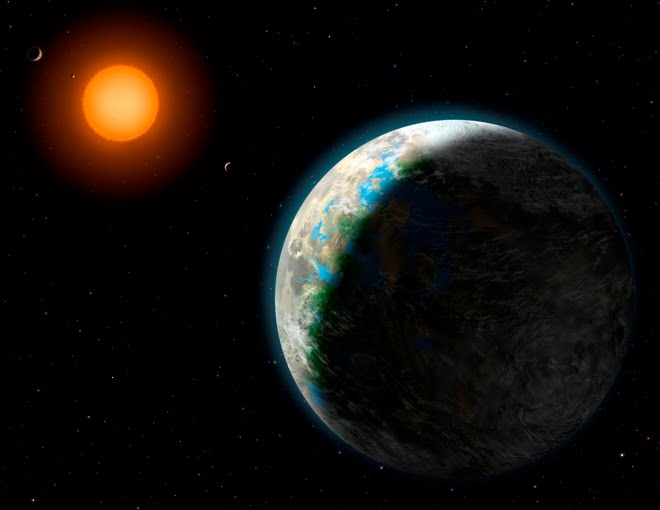 Russian scientists say chances of Apophis collision with Earth highest in 2036
Russian scientists say chances of Apophis collision with Earth highest in 2036For those concerned about the effects of Venus during its 2012 Transit, add in the 2012 passing of the asteroid Apophis, and concerns that its orbital path will be affected by Earth, creating a series of closer and closer encounters.
99942 Apophis (pronounced /əˈpɒfɪs/, previously known by its provisional designation 2004 MN4) is a near-Earth asteroid that caused a brief period of concern in December 2004 because initial observations indicated a small probability (up to 2.7%) that it would strike the Earth in 2029. Additional observations provided improved predictions that eliminated the possibility of an impact on Earth or the Moon in 2029. However, a possibility remained that during the 2029 close encounter with Earth, Apophis would pass through a gravitational keyhole, a precise region in space no more than about 600 meters across, that would set up a future impact on April 13, 2036. This possibility kept the asteroid at Level 1 on the Torino impact hazard scale until August 2006, when the probability that Apophis will pass through the keyhole was determined to be very small. Apophis broke the record for the highest level on the Torino Scale, being, for only a short time, a level 4, before it was lowered. Its diameter is approximately 270 meters (885 ft).
Recent reports out of Russia say that scientists there estimate Apophis will collide with Earth on April 13, 2036. These reports conflict on the probability of such a doomsday event, but the question remains: How scared should we be?
“Technically, they’re correct, there is a chance in 2036 [that Apophis will hit Earth]," said Donald Yeomans, head of NASA’s Near-Earth Object Program Office. However, that chance is just 1-in-250,000, Yeomans said.
The Russian scientists are basing their predictions of a collision on the chance that the 900-foot-long (270 meters) Apophis will travel through what’s called a gravitational keyhole as it passes by Earth in 2029. The gravitational keyhole they mention is a precise region in space, only slightly larger than the asteroid itself, in which the effect of Earth's gravity is such that it could tweak Apophis' path.
“The situation is that in 2029, April 13, [Apophis] flies very close to the Earth, within five Earth radii, so that will be quite an event, but we’ve already ruled out the possibility of it hitting at that time,” Yeomans told Life’s Little Mysteries. “On the other hand, if it goes through what we call a keyhole during that close Earth approach … then it will indeed be perturbed just right so that it will come back and smack Earth on April 13, 2036,” Yeomans said.
The chances of the asteroid going through the keyhole, which is tiny compared to the asteroid, are “minuscule,” Yeomans added.
The more likely scenario is this: Apophis will make a fairly close approach to Earth in late 2012 and early 2013, and will be extensively observed with ground-based optical telescopes and radar systems. If it seems to be heading on a destructive path, NASA will devise the scheme and machinery necessary to change the asteroid’s orbit, decreasing the probability of a collision in 2036 to zero, Yeomans said.
There are several ways to change an asteroid’s orbit, the simplest of which is to run a spacecraft into the hurtling rock. This technology was used on July 4, 2005, when Deep Impact smashed into the comet Tempel 1.
Many scientists agree that Apophis warrants closer scrutiny. To that end, in February 2008 the Planetary Society awarded $50,000 in prize money to companies and students who submitted designs for space probes that would put a tracking device on or near the asteroid. Several other groups have studied or plan to study missions to Apophis.
Sources: News.Yahoo.com, en.wikipedia.org/wiki/99942_Apophis







